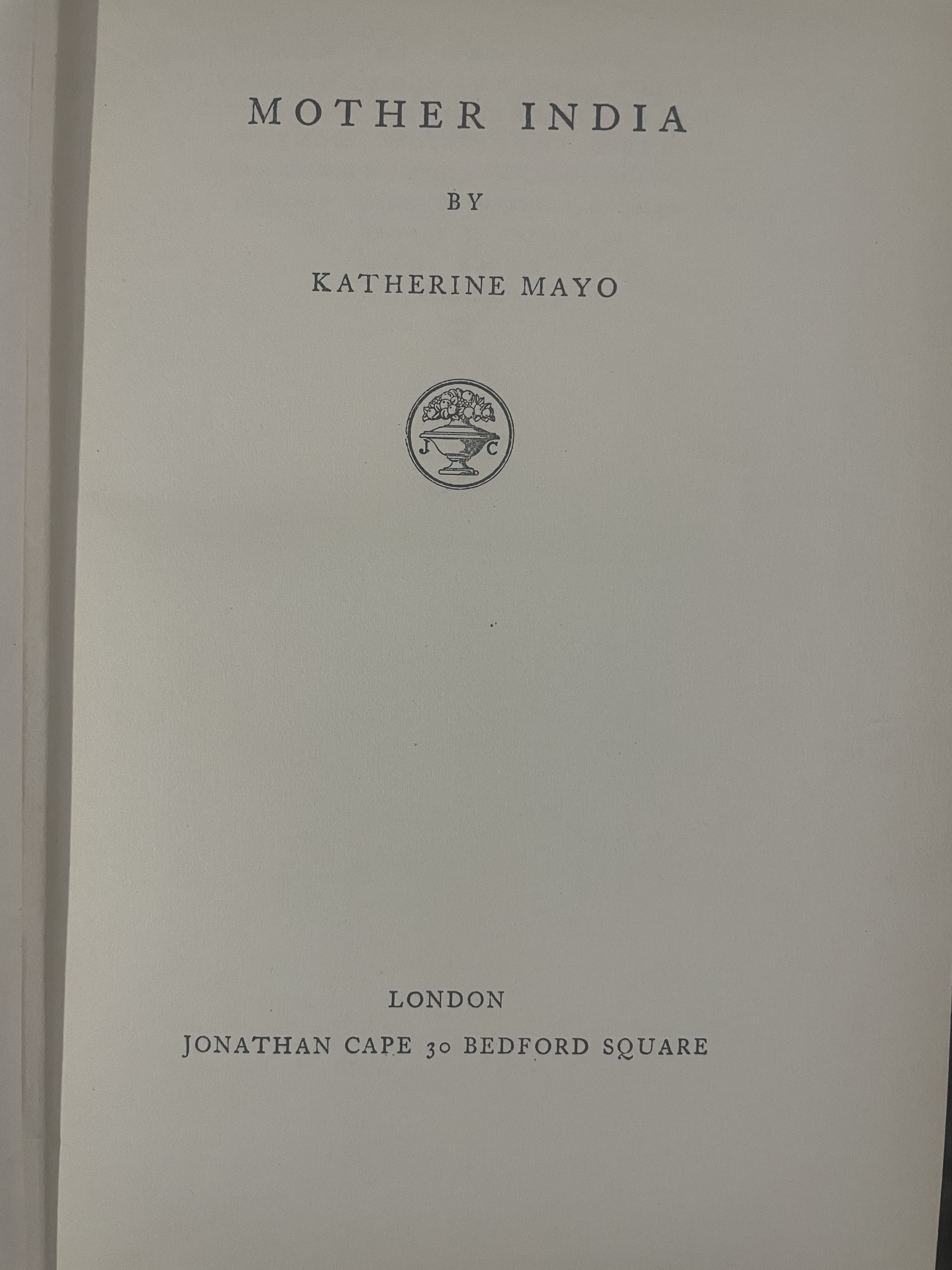Mother India

About
Summary
Exquisite
TOC
Details
Related
URL
Images
Overview
Mother India (1927) by American journalist Katherine Mayo is a polemical and controversial book that examines the status of women and girls in Indian society and provides Mayo's critical perception of Hindu culture. Written in opposition to the Indian independence movement, the book sparked widespread outrage in India, becoming a catalyst for change, albeit in ways contrary to Mayo's original intentions.Katherine Mayo's Mother India presents a highly critical view of Indian society, focusing particularly on the treatment of women, public health, and social customs. The book is structured as a collection of observations and anecdotes gathered during Mayo's three-month stay in India.
Importance of Book
Impact on Public Opinion: The book had a significant impact on public opinion in the United States and Great Britain, shaping Western perceptions of India and influencing the debate over Indian independence.
Catalyst for Social Reform: Though Mayo's intentions were to undermine the independence movement, her book inadvertently spurred social reform efforts within India. The criticisms leveled in "Mother India" prompted Indian reformers to address issues such as child marriage and improve the status of women.
Understanding Colonial Attitudes: Mother India provides valuable insights into the attitudes and beliefs of some Westerners during the colonial era. It reveals the prejudices and stereotypes that were used to justify British rule and suppress Indian nationalism.
Sparked Debate and Dissent: Mother India sparked intense debate and dissent, with Indian nationalists, various activists, and thinkers publishing numerous responses to counter Mayo's claims. This intellectual and political ferment contributed to the growing momentum for Indian independence.
Key Themes
Colonialism and its Justification: The book exemplifies the colonial mindset that viewed Western rule as necessary for civilizing and uplifting non-Western societies.
The Status of Women: The book puts the spotlight on the status of women and girls in Indian society and how that could be improved.
Cultural Difference and Prejudice: It underscores the dangers of cultural prejudice and the tendency to judge other societies based on one's own cultural norms and values.
Social Reform and National Identity: It shows how social reform movements became intertwined with the struggle for national identity and political independence.
Cultural Significance
Symbol of Colonial Bias: The book has become a symbol of colonial bias and Western condescension towards India.
Rallying Point for Indian Nationalists: It served as a rallying point for Indian nationalists, who united in their condemnation of Mayo's misrepresentations and stereotypes.
Stimulus for Social Reform: It prompted introspection and reform efforts within Indian society, particularly concerning the status of women and the need to eliminate harmful social customs.
Effects on Society
Damaged Image of India: The book damaged India's image in the West, reinforcing negative stereotypes and hindering the cause of Indian independence.
Fueled Indian Nationalism: It fueled Indian nationalism, galvanizing support for the independence movement and inspiring a sense of collective outrage and resistance.
Spurred Social Reform Efforts: It spurred social reform efforts within India, leading to the passage of legislation such as the Child Marriage Restraint Act of 1929, also known as the Sarda Act.
Inspired Counter-Narratives: It inspired the creation of counter-narratives, such as My Mother India by Dalip Singh Saund, which sought to rebut Mayo's claims and present a more accurate and nuanced picture of Indian society.
Conclusion
Katherine Mayo's Mother India is a deeply flawed and biased book that nevertheless had a significant impact on both India and the West. While it reinforced negative stereotypes and hindered the cause of Indian independence, it also spurred social reform efforts within India and inspired a wave of counter-narratives that challenged Mayo's misrepresentations. The book remains a valuable case study for understanding the complexities of colonialism, cultural bias, and the power of propaganda. Its impact can best be summed up in its ability to influence the perceptions of future generations.
Table of Content
Mother India\" by Katherine Mayo, published in 1927, is a controversial book that critiques Indian society, particularly focusing on issues such as poverty, social practices, and gender inequality. The book was met with significant criticism in India for its portrayal of the country and its people.The table of contents for the 1927 edition of \"Mother India\" is as follows:The Lotus and the Muck
The Hindoo Family
The Unmarried Mother
The Indian Marriage
The Hindu Widow
The Child Wife
The Child Husband
The Boy Who Never Grew Up
The Religion of the Hindoo
The Goddess and the Temple
The Devil and the Gods
The Doctor and the Patient
The Fighting Man
The Social Reformer
Title
Mother India
Author
Ktherine Mayo
Name of Publisher
Jonathan Cape Bedford Square London
Publish Date
1927
Vintage
1901-1947
Edition
Fifth
Number of Pages
391
Category
Literary
Sub Category
Biography
Rarity
RARE
